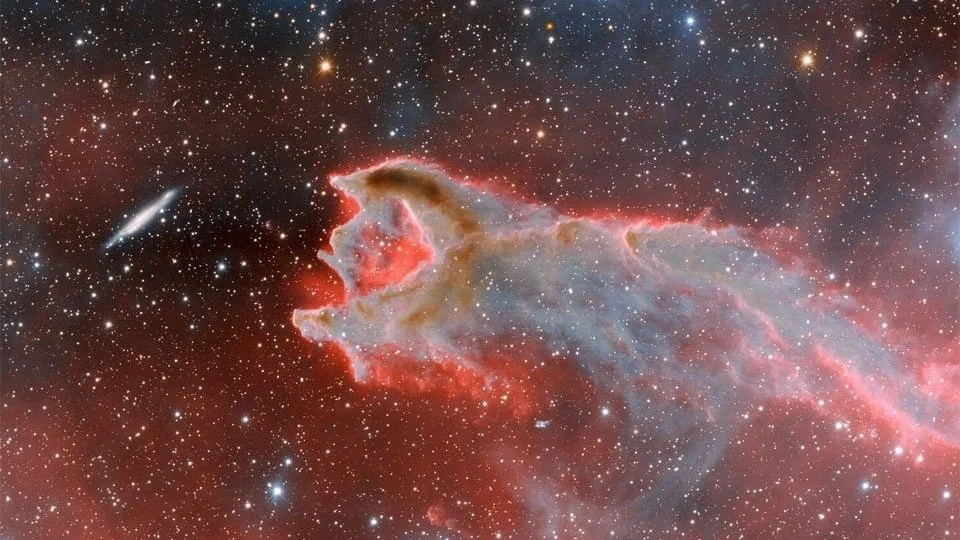100 Interesting Things 11-15: Juice equals Action
This post is part of a series I started after reading Russell Davies “Notice, Collect, Share",.’ I’m more inspired than ever to get back into the habit of…noticing, collecting and sharing. As part of that return to habit I’m going to try and find five things that interest me every week, and share them here on my blog. 5 things per week, for 20 weeks, equals 100 Interesting things. Maybe one of these things will inspire you. Maybe one of them will inspire me. We’ll all learn something along the way.
#11: The Distant Mountain theory of worldbuilding says that a “world that feels real needs many things that are glimpsed but never explained or shown in detail, implying the story we see is a tiny fragment of a complex universe with more history and cultures and places lurking offstage than can fit in the narrative. A world with no gaps feels as fake and contrived as it is.”
I love that theory, and I think it explains why I like Ursula K. LeGuin’s Hainish books so much. In them, so much of the worldbuilding is left to your imagination. The League, The Shing, The Ekumen are all referenced…but never really made real. It adds to the feeling of isolation so many of the characters feel, and also adds weight to the immensity of space and how truly far apart the planets are from each other. To a similar extent it’s also probably why I like House of Suns.
#12: “The Action Is The Juice” - When I’m not reading Science-Fiction I’m watching crime movies. Heat has always been one of my favourites and I finally go around to watching LA Takedown, the made for TV movie that Michael Mann shot in 1989 using almost the same script. Sure, the plot is about a crew of thieves. But the bigger story is about the detective and the crew’s leader, both hopelessly devoted to their careers, playing a game of cat and mouse.
One of the best lines in both movies (though the subtle difference is huge) is when the character Cerito says that for him, “the action is the juice” when he’s deciding whether to join his crew on the next heist.
That line sticks with me, both because I think it’s important to the movie but also because it sums up a way of life:
Some people exist and work for the endgame and the output. There’s nothing wrong with that.
But for other people, there is joy in the work itself. For my work, I love the kick-off, and the excitement of a new project. I love starting to put it in order, and I love the complexities and victories, friction and harmony along the way. I live for taking a step back to look at the deck, to print the slides out and tape them to wall at 9pm at night and see if the fit. There is joy in learning something new as part of the strategy, and joy in seeing the pieces click together.
The process is the payoff. The action is the juice.
#13 Fifty-Eight Rules For UX Design - I know what you’re thinking: “58 rules? They can’t all be good. And a list of 58 seems like bad UX.”
And you’re right on both counts. But there are also some great ‘rules’ in that list. And while the majority might make more sense if you’re a senior level UX practioner or researcher some are also great if you’re just slide deck enthusiast like me and want to make your presentations better.
I’m sure rules were made to be broken…but I had also never heard of the 60-30-10 rule: Use 60% of your primary colour, 30% of your secondary colour, and only 10% for your supporting/accent colour.
#14 The Right Creative Copy Doubles Your Market Share - I love what I do for work, and I love, love, love learning more about just what makes communications tick and work. And that’s why I love the work that System1 and Andrew TIndall are doing: They don’t pretend to have the science perfectly dialled, but they’ve got it dialled up just enough to match the art.
This recent breakdown on what makes a great OOH (Out Of Home) piece work, and how to make it better, is. great reminder of just how much you need to sweat the work to make it work.
#15 The Best American Wall Map - Maps are great - they’re fun to look at, and fun to imagine what goes on in all those places. They’re also incredibly complex to put together as this article details. It makes sense that a lot of work has to go into one, and that computers or teams of people can adjust them to get them a bit more readable, a bit more human.
There’s something poetic about the creation of this map though. From the article:
“The longer you look at (his) map, the more deeply you feel the complexity and the artistry. It comes out of a tradition in which maps were made by hand using hot wax and X-Acto knives. You have no doubt that every tiny decision on Imus’ map was made for a reason.”
If you liked this post you can check out more in this series here.
This week’s astronomy photo is CG4: The Globule and The Galaxy from the NASA Astronomy Photo of the Day. The globule in this picture is a massive cloud of cosmic dust that will eventually form stars.


